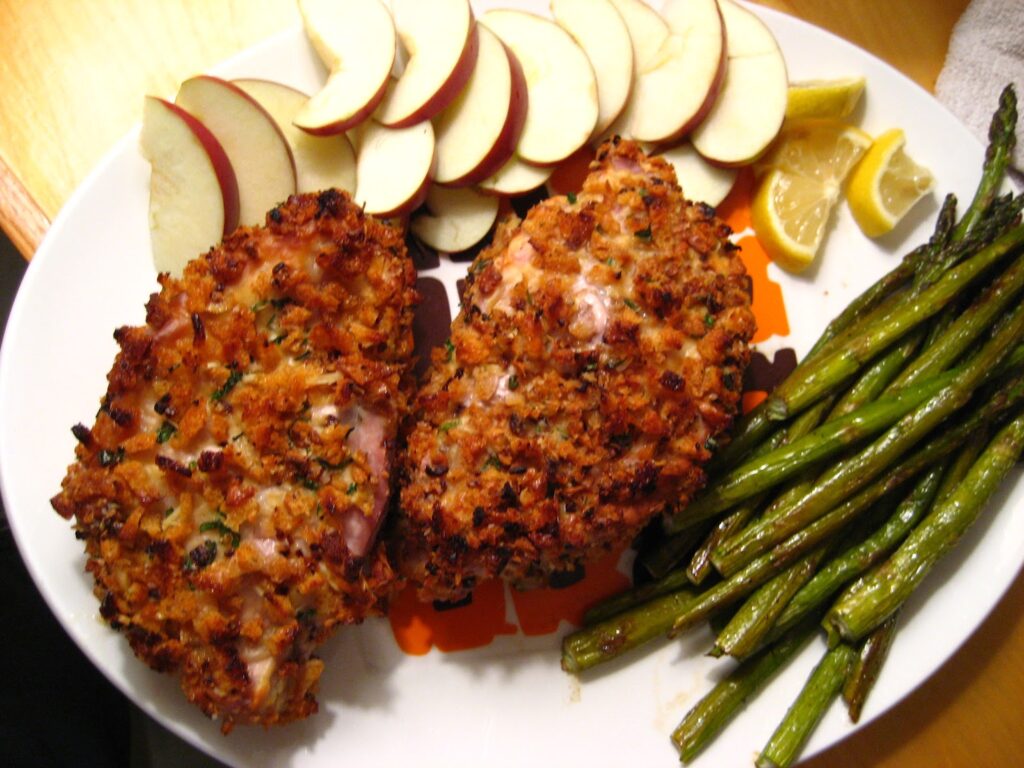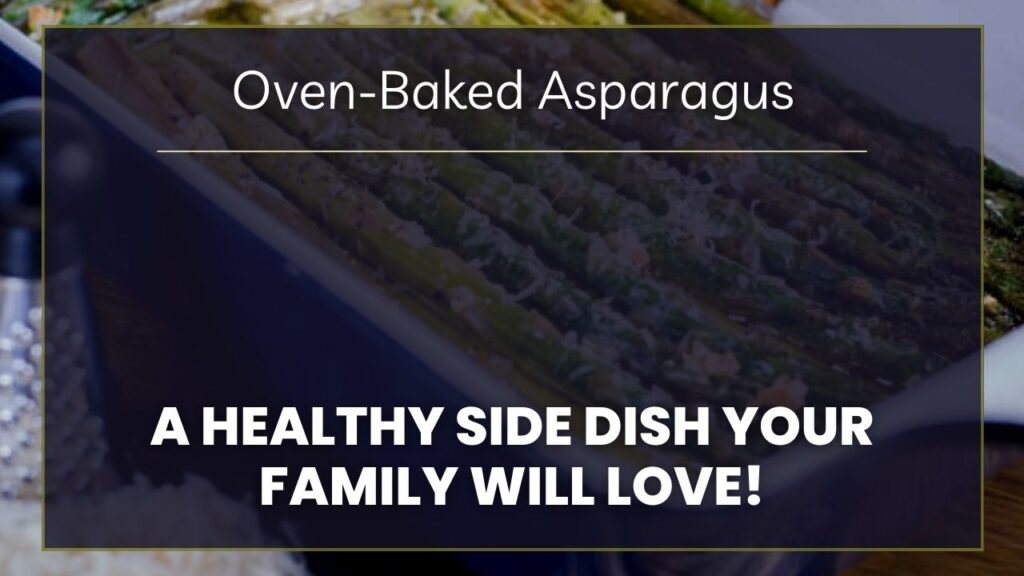Asparagus, with its tender stalks and delicate flavor, has graced culinary dishes for centuries. Historically rooted in the Mediterranean regions, it’s a vegetable that’s been both celebrated by royalty and enjoyed by the masses.
Over the years, various cooking methods have been employed to bring out the best in asparagus, from boiling to grilling. However, the modern kitchen has seen a resurgence in oven-baked dishes, offering a healthful, easy, and flavorful approach to cooking.
Asparagus is not only a gustatory delight; it’s packed with numerous health benefits, making it a side dish that’s as nutritious as it is delicious.
Here is a detailed guide on oven-baked asparagus.
The Nutritional Powerhouse: Asparagus
Often overlooked for more popular vegetables, asparagus is a nutritional goldmine. This slender stalk is a rich source of essential vitamins like A, C, E, and K. Alongside this, minerals like iron, calcium, and potassium are abundant in it. Notably, asparagus is also teeming with antioxidants, which combat free radicals in our bodies.
One of the standout health benefits of asparagus is its ability to aid in digestion. Thanks to its high fiber content and natural diuretic properties, it’s a boon for gut health.
Additionally, its anti-inflammatory attributes can help reduce the risk of chronic diseases. From a dietary perspective, asparagus is low in calories and high in soluble fiber, making it ideal for weight management and detoxification. Its inherent nutrients support metabolic function, ensuring our bodies efficiently process foods.

Selecting the Perfect Asparagus
While shopping, the freshness of asparagus is paramount. The vibrant green color is often a good indicator, but one should also seek firm, straight stalks. The tips, or the ‘crowns,’ should be tight and compact, free from any signs of withering. Texture-wise, they should be smooth to the touch, devoid of any sliminess.
While the most commonly consumed asparagus is green, there are other varieties like white and purple. White asparagus, devoid of chlorophyll due to being grown without sunlight, offers a slightly milder flavor. Purple asparagus, rich in anthocyanins (the same antioxidant found in blueberries), provides a fruitier bite.
After purchasing, proper storage is crucial to maintain the freshness. Ideally, asparagus should be consumed quickly. However, if storing is necessary, wrapping the ends in a damp paper towel, placing them in a plastic bag, and refrigerating can extend their freshness.
Preparing Asparagus for Baking
Before diving into the baking process, it’s essential to prep the asparagus properly. Begin by rinsing the stalks under cold water to remove any dirt or grit. Given the rising concerns over pesticides, it’s advisable to wash them thoroughly, especially if they aren’t organically grown.
The next step is trimming. The base of asparagus stalks can be woody and tough to chew. A good rule of thumb is to hold the asparagus at both ends and bend. The asparagus will naturally snap at the point where the tender part meets the tougher stem. Alternatively, one can use a knife to trim about an inch or so from the base.
Blanching, a technique where the vegetable is briefly plunged into boiling water and then immediately transferred to ice water, is a step some chefs swear by for asparagus. While it’s not a mandatory step for baking, blanching can enhance the vegetable’s color, making it even more vibrant and also slightly tenderize the stalks before baking.
Seasoning and Marinades
Asparagus, with its distinct, earthy flavor, is wonderfully receptive to a myriad of seasonings and marinades. The right spices and herbs can elevate this already delightful vegetable to gourmet status.
Basic seasonings often begin with a good-quality olive oil. This not only aids in cooking but also acts as a binding agent for other spices. A generous sprinkle of salt and a dash of freshly ground black pepper are often sufficient for those who want to retain the vegetable’s natural flavor. The olive oil helps in crisping the asparagus, while the salt brings out its inherent sweetness.
For those inclined towards more advanced flavor profiles, the world is your oyster. Garlic, either minced or in powder form, can provide a zesty kick, complementing the asparagus’s earthy tones. A sprinkle of lemon zest or a light squeeze of its juice can add a refreshing citrus note, making it a summer favorite.
For those who love a touch of umami, grating some fresh parmesan cheese over the asparagus before baking can be an absolute game-changer. The cheese melts slightly, forming a delightful crust, making each bite creamy and savory.
Marinades offer another dimension of flavor. While asparagus doesn’t necessarily need a long soak given its tender nature, a quick marinade can infuse deeper flavors. Consider a concoction of soy sauce, minced ginger, garlic, and a touch of honey for an Asian twist.
Or perhaps a mix of balsamic vinegar, olive oil, and Italian herbs for a Mediterranean vibe. The key is to ensure the marinade is not too watery, which might make the asparagus soggy.
Oven-Baking Asparagus to Perfection
The process of oven-baking asparagus, while straightforward, requires a bit of attention to detail.
Oven temperature plays a pivotal role. Too low, and the asparagus might become overly soft without those delightful crispy edges. Too high, and it might char before cooking through. The sweet spot often lies between 375°F to 425°F, but this can vary based on the oven’s calibration and the thickness of the asparagus stalks.
Timing is also of the essence. Asparagus is not a vegetable that benefits from prolonged cooking. Typically, depending on the thickness, anywhere from 10 to 20 minutes should suffice. The goal is to achieve stalks that are tender but still have a bite, with edges that are slightly crispy.
When it comes to methods, there are a couple of popular options. Using a baking sheet is most common, allowing the asparagus to lay flat, ensuring even cooking. It’s crucial to avoid overcrowding the pan, which can lead to steaming instead of roasting, denying you those crispy tips.
Alternatively, oven-proof dishes can be used, especially if you’re incorporating a sauce or cheese that might drip. Whichever method you choose, ensure that the asparagus is spread out evenly and turned halfway for uniformity.
Complementary Dishes
Asparagus, with its distinctive flavor profile, pairs effortlessly with a range of main courses and other side dishes.

When considering protein pairings, asparagus traditionally accompanies grilled or roasted meats. Steak, particularly tender cuts like filet mignon, harmonizes beautifully with asparagus, especially when seasoned with garlic and butter.
The subtle flavors of fish, such as salmon or cod, also complement the green vegetable. When baked with a squeeze of lemon, asparagus can enhance the lightness of the fish.
For vegetarian and vegan complements, asparagus pairs exquisitely with tofu and tempeh. Consider marinated tofu steaks, where the spongy texture of tofu absorbs the flavors of the marinade and contrasts with the crispness of the asparagus. Tempeh, with its nutty flavor, can be stir-fried with asparagus for a delightful main course.
In terms of other side dishes, consider creamy mashed potatoes or a light quinoa salad. The creaminess of the potatoes or the nuttiness of quinoa can offset the roasted flavors of the asparagus, creating a well-rounded plate.
Creative Twists: Moving Beyond the Basics
For those wanting to add a gourmet touch, consider wrapping asparagus in prosciutto or bacon before baking. This not only adds a salty depth but also introduces a crunchy texture, making for a delectable appetizer or side dish.
Post baking, asparagus can be incorporated into salads. Chopped into bite-sized pieces and mixed with mixed greens, cherry tomatoes, feta cheese, and a light vinaigrette, asparagus can elevate a simple salad into something special.
Lastly, for a playful twist, transform the vegetable into asparagus fries. Dipped in a light batter and breadcrumbs and then baked, they turn into a crunchy delight, perfect for dipping in aioli or your sauce of choice.
Conclusion
Oven-baked asparagus stands as a testament to the beauty of simplicity in cooking. While it’s delightful in its most basic form, the vegetable’s versatility offers a canvas for culinary creativity.
Whether you’re seeking a healthy side dish or wanting to experiment with flavors and presentations, asparagus beckons. Embrace its verdant charm, and let it add a touch of gourmet sophistication to your meals.
